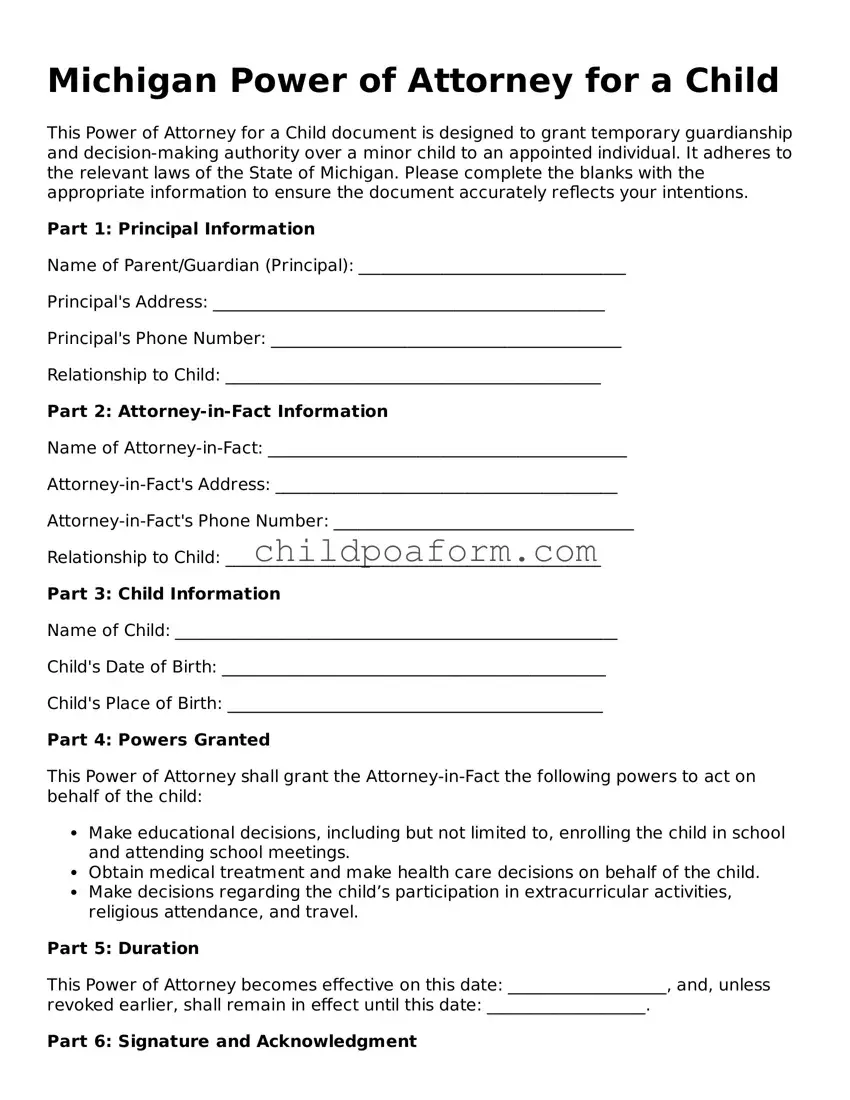Instructions on Utilizing Michigan Power of Attorney for a Child
Granting someone the power to make decisions on behalf of your child can be a weighty task, but with the right preparation, it doesn't have to be daunting. The Michigan Power of Attorney for a Child form is designed to enable you to officially authorize a trusted person to act in your place for matters concerning your child. This authority can cover a range of decisions, from healthcare to education, ensuring your child's needs are met even when you can't be there in person. As you prepare to fill out this document, understanding the steps involved will help streamline the process, making it as smooth as possible.
Steps to Fill Out the Michigan Power of Attorney for a biosphere Form:
- Gather Necessary Information: Before starting, collect all the necessary details including the full legal names and addresses of the parent(s) or legal guardian(s) and the appointed attorney-in-fact, along with the child’s full name and birthdate. Having this information at hand will save time.
- Download the Form: Obtain the latest version of the Michigan Power of Attorney for a Child form from a reliable source such as a state government website or a reputable legal forms provider.
- Fill in the Parent(s) or Legal Guardian(s) Details: Enter the name(s) and address(es) of the parent(s) or legal guardian(s) granting the power of attorney in the designated section of the form.
- Specify the Attorney-in-Fact: Write the full name and address of the individual you are appointing as the attorney-in-fact, who will have the authority to make decisions for the child.
- Define the Powers Granted: Carefully read the powers that are being granted to the attorney-in-fact as outlined in the form. If necessary, you can add or restrict powers based on your specific needs, ensuring they are clearly defined in the document.
- Indicate the Time Period: Clearly specify the date range for which the power of attorney will be valid. You can set a specific end date or state conditions under which the power of attorney will terminate.
- Signatures: Sign and date the form in the presence of a notary public. The notary must witness the signing and then notarize the document, adding their seal to make the power of attorney legally binding.
Prepare Copies: After notarization, make several copies of the signed and notarized document. Provide a copy to the appointed attorney-in-fact, keep one for your records, and consider providing copies to relevant institutions such as your child’s school or healthcare provider. Review Regularly: Regularly review the power of attorney document to ensure it still aligns with your wishes and make any necessary adjustments, following a similar process for making changes or revocation.
By methodically following these steps, you will create a robust Power of Attorney for a Child document that ensures your child's affairs can be managed according to your wishes, even in your absence. Whether for short-term situations or ongoing circumstances, having this document in place provides peace of mind, knowing your child’s welfare is protected. It's a responsible action that underscores the depth of your commitment to your child's well-being.
